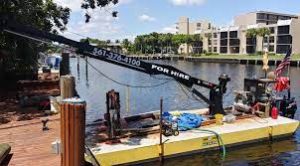Local regulations regarding docks can affect the size, shape and materials you choose. It’s best to consult with a local dock expert in St. Petersburg on these issues before starting construction.

A professional will know the correct permitting procedures and can handle all the complicated work of measuring, hammering and drilling. They will also be able to provide recommendations for the best materials and construction techniques.
If you have a pond on your property that can be used for recreational purposes, building a dock allows for easy access to the water. While the construction process can require a bit of specialized equipment and recruiting a couple people to help, it is a great way to make your pond more usable and increase its value.
The first step is to decide what material you want your dock to be made from. Wood is a traditional option that can last for decades but requires regular maintenance to protect it from insects, rot, warping and splintering. Plastic, on the other hand, is a more economical and environmentally-friendly choice that is durable and doesn’t need to be painted or stained.
The next step is to set the pilings for the dock. This can be done by drilling holes for the footers in the bottom of the pond or lake bed, but using a jet is generally the best option as it saves time and provides a more stable base for the dock.
If you have a waterfront property, it’s likely that at some point in time you’ll want to build a dock. A dock is a major investment and requires specific know-how.
During the planning process, it’s important to consider how you’ll use your dock and incorporate those uses into your final design. For example, seating can be incorporated into your dock planking, making it easy to relax and enjoy the view of the water.
Other features to consider are the shape and size of your dock. For example, a rectangular dock offers maximum berthing space, while a diamond dock is designed with a series of long sides that can expand according to the dock’s capacity. Lastly, your dock should be properly sheltered from wind and tidal currents.
The first step in building a dock is to prepare the site. This is done by carrying out a geotechnical site investigation, which analyzes the composition and properties of rock, soil and groundwater. It also enables you to determine whether the property is suitable for constructing structures like a dock.
If the dock is a commercial or governmental facility, there are specific regulations that must be followed. This includes zoning laws and setback requirements. The structure should also be able to accommodate the dock’s intended uses and provide a safe environment for those using it.
It is essential to take into account prevailing wind directions, water currents and wave action when constructing the dock. These factors can have a significant impact on production and efficiency. The number of access points must also be taken into consideration. This can be determined by determining the type of cargo that is shipped and received and the amount of handling equipment available, such as rolling ladders.
Whether it’s for fishing, swimming, or simply relaxing, docks add value to your property and allow you to enjoy the beauty of the surrounding water. However, building a dock is not an easy task and requires careful planning. Unless you are an experienced builder, it is best to work with a professional.
It’s also important to take local regulations into consideration. Some municipalities have rules about the size of a dock and the materials that can be used. These rules are designed to protect the water and all of its inhabitants, from fish to birds.
Other factors that may influence construction include the height of the water and whether it’s deep enough for mooring vessels. If your lake is shallow, you may need to consider dredging to increase depth. You’ll also want to think about installing safety features like railings and non-slip tape. These can help prevent injuries and damage to boats and swimmers. Lastly, you’ll need to install a dock ladder to make it easy for users to enter and exit their boats.

